
views
Cleaning the Tools
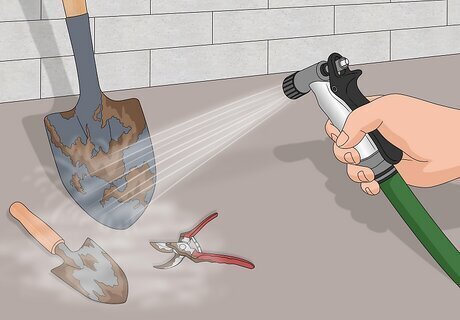
Remove dirt and debris from tools with water. Before disinfecting tools, remove dirt and grime using a forceful stream of water. Wash them beneath a strong spigot, or use a hose with a jet-stream setting. Clean tools are easier to use and disinfect.
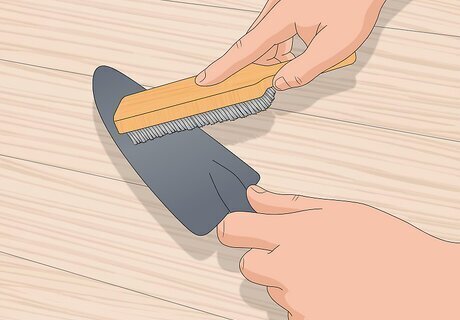
Scrub tools that aren’t easy to clean. Some soils are difficult to wash off. If you’re having trouble removing dirt and debris from your gardening tools with just water, use a stiff wire-bristle brush or a scraping tool (a caulking knife, for instance) to remove the caked-on material.
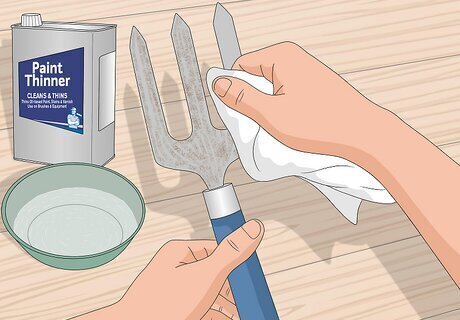
Wipe away sap and resin using a disinfectant. If your tools have any sticky residue on them, such as sap or resin, wipe the affected tools with a cloth or paper towel dampened with a disinfectant. If the sap or resin resists removal, wipe the affected area vigorously with paint thinner.
Disinfecting with Less Corrosive Methods
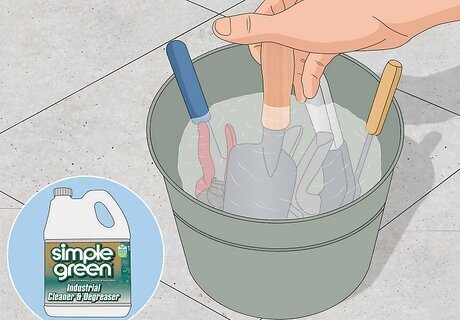
Disinfect your tools with a household cleaner. Commercial household disinfectants (such as Lysol or Simple Green D) can be used to disinfect your gardening tools. The advantage of these types of disinfectants is that they are relatively gentle on you and your tools compared to bleach or industrial cleansers. Fill a bucket with a household cleaner of your choice. Soak the tool in it for a couple minutes, then remove it. To reduce the corrosive aspect of household cleaners further, combine them in a solution of one part cleaner and five parts water.
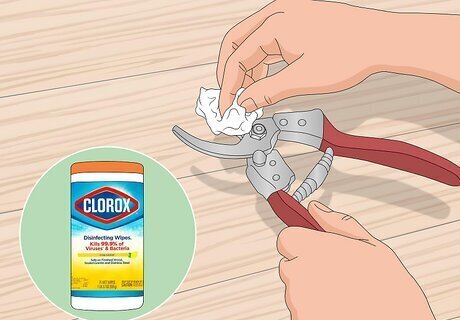
Use disinfectant wipes. Some gardening stores might offer disposable disinfectant wipes for gardening tools. You can also use general purpose wipes, such as Lysol or Clorox disinfecting wipes. To use the disinfectant wipe, remove it from its container and wipe the tool thoroughly. Throw away the wipe after use. You might need to use more than one wipe per tool.
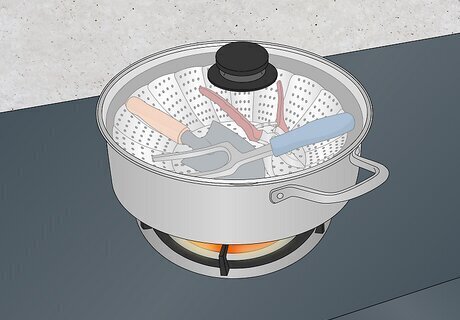
Use steam or dry heat to clean your gardening tools. Heat your gardening tools to 180°-200° F (82°-93° C) under a cover for about 30 minutes. For instance, you might place some of your smaller gardening tools on a steam basket, cover it, then steam them on the stove for half an hour.

Use 70% isopropyl alcohol to disinfect your tools. Dip the tools you want to clean in the alcohol, then remove them and allow them to dry. Alternately, wet a rag with alcohol and wipe the gardening tools down. You could use wood, grain, or rubbing alcohol. There’s no need to rinse your tools after using alcohol. Don’t use alcohol around fire or a strong heat source.
Disinfecting with More Corrosive Methods
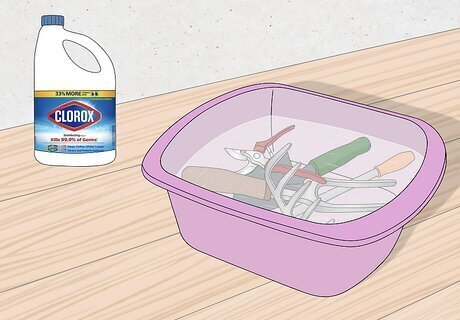
Use liquid bleach. Mix one part liquid bleach with nine parts water. Dip your gardening tools in the mixture, then remove them and let the material drain off. Alternately, spray or brush the mixture onto the gardening tools and allow it to drain off. Rinse the remaining mixture off the object after most of it has drained away. Liquid bleach is sold under trademarked names like Clorox, Everchlor, Hypo, Bridos, Bleacol, and Hispec. Bleach is one of the most corrosive of all gardening tool disinfectants. If inhaled, bleach may cause damage to your nose, throat and lungs. It can also damage or irritate your skin. Always wear protective masks and rubber gloves when cleaning tools with bleach solutions.
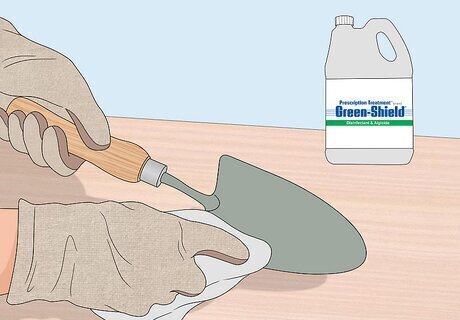
Clean your tools with an industrial disinfectant. If you have diseased plants, you may wish to get an industrial-grade gardening disinfectant to help prevent the problem from spreading. The most common varieties are “quats” (or “q-salts”) and hydrogen peroxide-based cleansers. Purchase the disinfectant of your choice from a horticulture or garden supply store, and follow all package directions and warnings carefully. These industrial products are formulated to kill algae, fungus, bacteria, and spores immediately on contact. A few common commercial Q-salt products are Green-Shield, Physan 20, and KleenGrow. Hydrogen peroxide (or hydrogen dioxide) is marketed under trademarked names like ZeroTol and TerraClean.
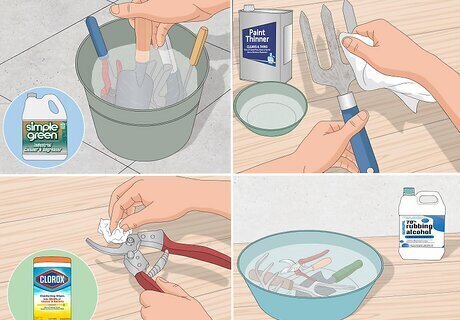
Disinfect your tools regularly when working on infected plants. If you’re using your gardening tools on diseased plants, shrubs, or trees, treat your tools with a disinfectant after every use. This will prevent the disease from spreading throughout a plant or between plants.


















Comments
0 comment